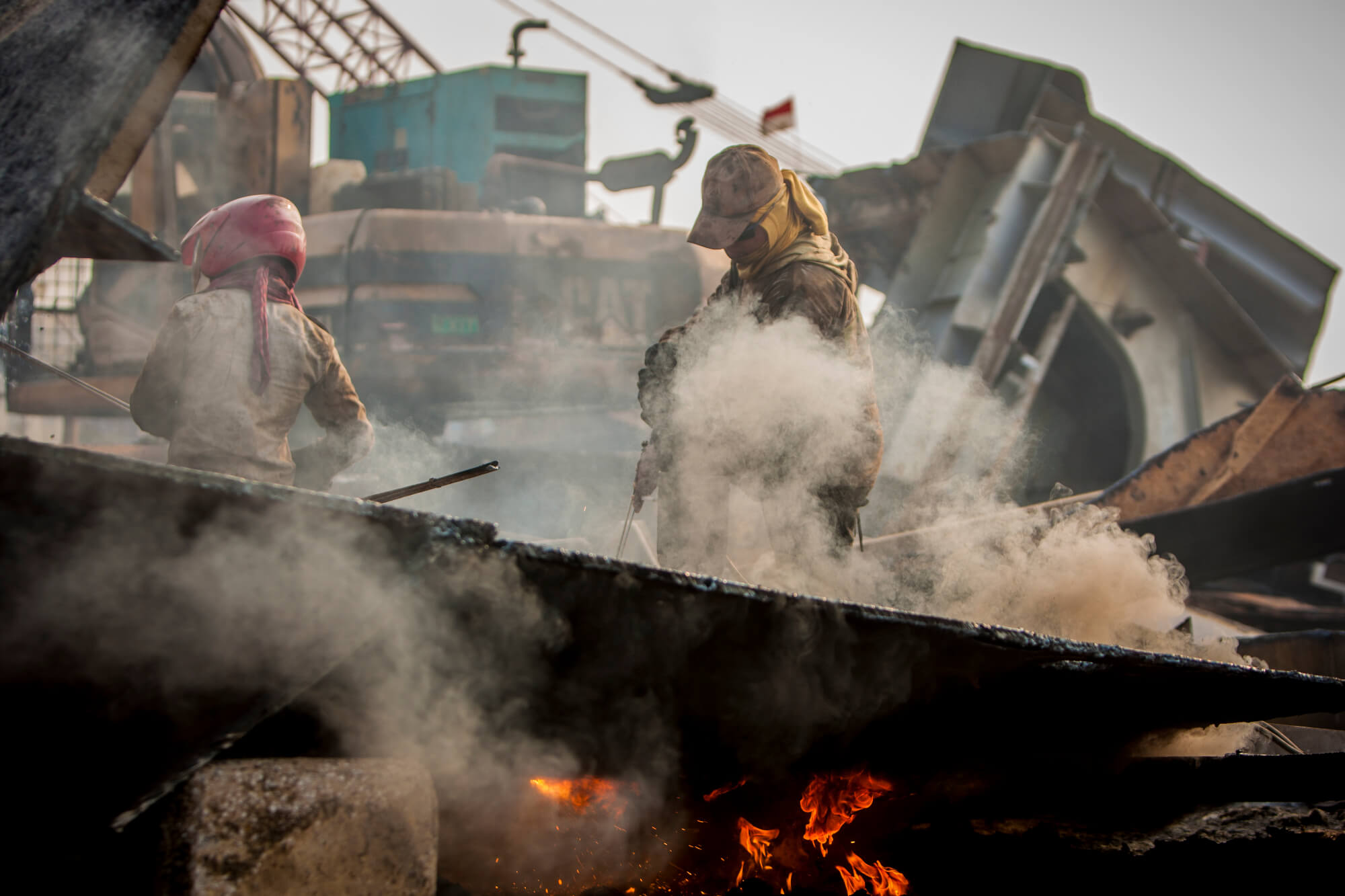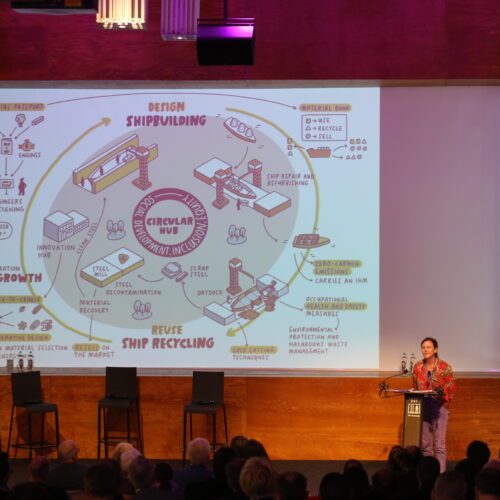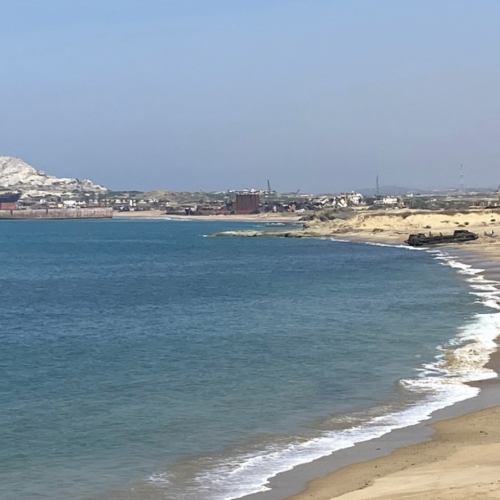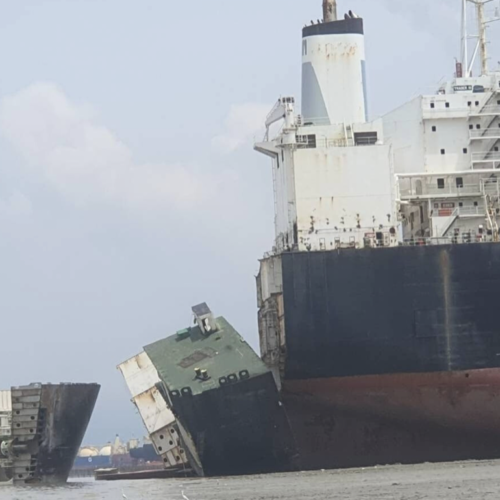Why ships are toxic
While ships sometimes carry waste materials as cargo, a ship itself is also considered as waste when the decision is made to dismantle it. Any ship may contain various amounts of hazardous materials within its structure.
End-of-life ships can contain various amounts of toxic materials in their structure, which need to be properly located, identified, removed and disposed of. On the beaches of South Asia, because of the lack of proper waste reception facilities, adequate training for workers, and cooperation from ship owners to provide the necessary documentation, toxic waste from shipbreaking contaminates the coastal areas and exposes the workers to hazardous substances. Also the local population is at risk when ship parts are sold on the second-hand market.

ASBESTOS
Asbestos is one of the most common and most hazardous materials found onboard ships, and. an average sized ship contain approximately 7 tons of asbestos. Asbestos is used, particularly in engine rooms, because of its thermal insulation and fire-resistant properties and is sandwiched installed between steel plates in the walls or in the doors. When extracted, it breaks into fine fibres, which can be suspended in the air for long periods of time. If inhaled, the fibres form scar -tissue in the lungs that can lead to fatal diseases such as lung cancer, mesothelioma and asbestosis, the symptoms of which are not apparent for many years. Asbestos fibres travel to the workers' accommodation through their clothes, lengthening their exposure to the pollutant and exposing others living in the same accommodation. Special training, protective equipment and monitoring and decontamination facilities are required.
Surrounding communities can be exposed to the asbestos that is hastily dumped in landfills. Dumped on site, asbestos is also used by workers living beside the shipbreaking yards for construction and other use. Asbestos boards originating from end-of-life vessels are also frequently sold on the second hand market. The re-working process is very primitive and no precautions against contamination are taken.
Click here for our fact sheet on asbestos.
HEAVY METALS
Heavy metals need to be properly disposed off. Mercury taken at high dosage can deeply harm the nervous system. Long-term exposure to lead, even to low levels, can cause irreversible learning difficulties, mental retardation, and delayed neurological and physical development. Lead poisoning affects the nervous system, and impairs hearing, vision and muscle coordination. Lead, mercury, cadmium, zinc, lead, and copper can be found in many products onboard a vessel, such as paints, coating, insulation, batteries and electrical compounds. Mercury can be found in thermometers, electrical switches, level switches and light fittings.
MINERAL OIL
Workers can be exposed to toxic oil and fuel when they inhale the fumes released by torch-cutting on shipbreaking yards. Everyone is at risk when eating contaminated fish and drinking contaminated water. Due to poor gas-freeing operations prior to torch cutting, residue oils are also at the source of explosions killing and injuring workers on the spot.
BILGE AND BALLAST WATER
Other health and pollution risks come from the release into the ocean of bilge and ballast water. The former, located in the lowest part of the ship's hull, can release oil, cargo residues, inorganic salts, arsenic, copper, chromium, lead and mercury to the sea, when pumped out directly into the ocean. Similarly, organic pollution coming from sewage can cause serious health risks for workers if they breathe it in. The latter is contained in the ballast tanks of a ship, in which bio organisms and sediments accumulate over the course of many years. Prior to beaching the tanks are cleaned out and the ballast water is evacuated into the ocean or stays on the beach, which can threaten the local ecosystem and the human food chain, causing lead poisoning, anaemia, liver damage and cancer.
POLYCYCLIC AROMATI HYDROCARBONS (PAHs)
About 30 PAHs (out of 250) and several hundreds of their derivatives are classed as carcinogenic. Workers are exposed when inhaling fumes released during torch cutting, after torch cutting when paints continue to smoulder or when wastes are deliberately burned. The combustion of oil may for example lead to the formation of PAHs. PAHs accumulate in dust and sediment, and tissues of life forms.
POLYCHLORINATED BIPHENYLS (PCBs)
PCBs are found in solid and liquid forms in equipment and materials on obsolete ships. PCBs tend to leak into the soil and contaminate ground water. When burned, they create some of the most hazardous substances known – dioxins and furans. While it is relatively easy to remove liquid PCBs prior to export, the use of solid PCBs in old ships is extensive. Ships can contain many hundreds of tonnes of PCB contaminated materials including: insulation, paints, decking, gasketry, wires and cables. Long-term exposure can cause liver and neurological damage as well as infertility and cancer.
ORGANOTINS
Tributyltin (TBT) is an aggressive biocide, which means that it kills living organisms. It has been used in anti-fouling paints since the 1970s because it prevents micro organisms such as barnacles and algae from accumulating on the ships hulls. It is considered as one of the most toxic compounds in aquatic ecosystems. TBT is responsible for the disruption of the endocrine system of marine shellfish leading to the development of male characteristics in female marine snails. It also impairs the immune system of organisms. Organotin compounds can damage human health even in small doses. Even though banned by some international agencies, TBT anti-fouling paints are still used in countries with poor regulation enforcement.
NORM
The inside of the storage, transportation and production equipment of oil and gas extraction units is often coated by scale including naturally occurring radioactive material (NORM). NORM-scale consists of radioactive elements contained in oil and gas when it is extracted. High levels of NORM were first documented in 1981 in the production systems of all the main oil and gas fields in the North Sea. NORM is especially prominent in the North Sea basin and off the coast of Brazil. Exposure to ionizing radiation poses risks to workers’ health, the public and the environment. The risk of exposure during decommissioning is high. All workers dismantling contaminated structures must therefore have the adequate training and safety equipment. Parts containing NORM have to be cleaned, handled and disposed in a controlled manner at facilities that are licensed to handle radioactive waste.

RECOMMENDED READINGS
Latest News

Platform News – EU Circular Economy Act: ship recycling can help decarbonise the EU’s steel and construction sectors
With a significant number of ships expected to reach the end of their service life in the coming years, ship recycling presents a strategic opportunity for Europe… Read More


